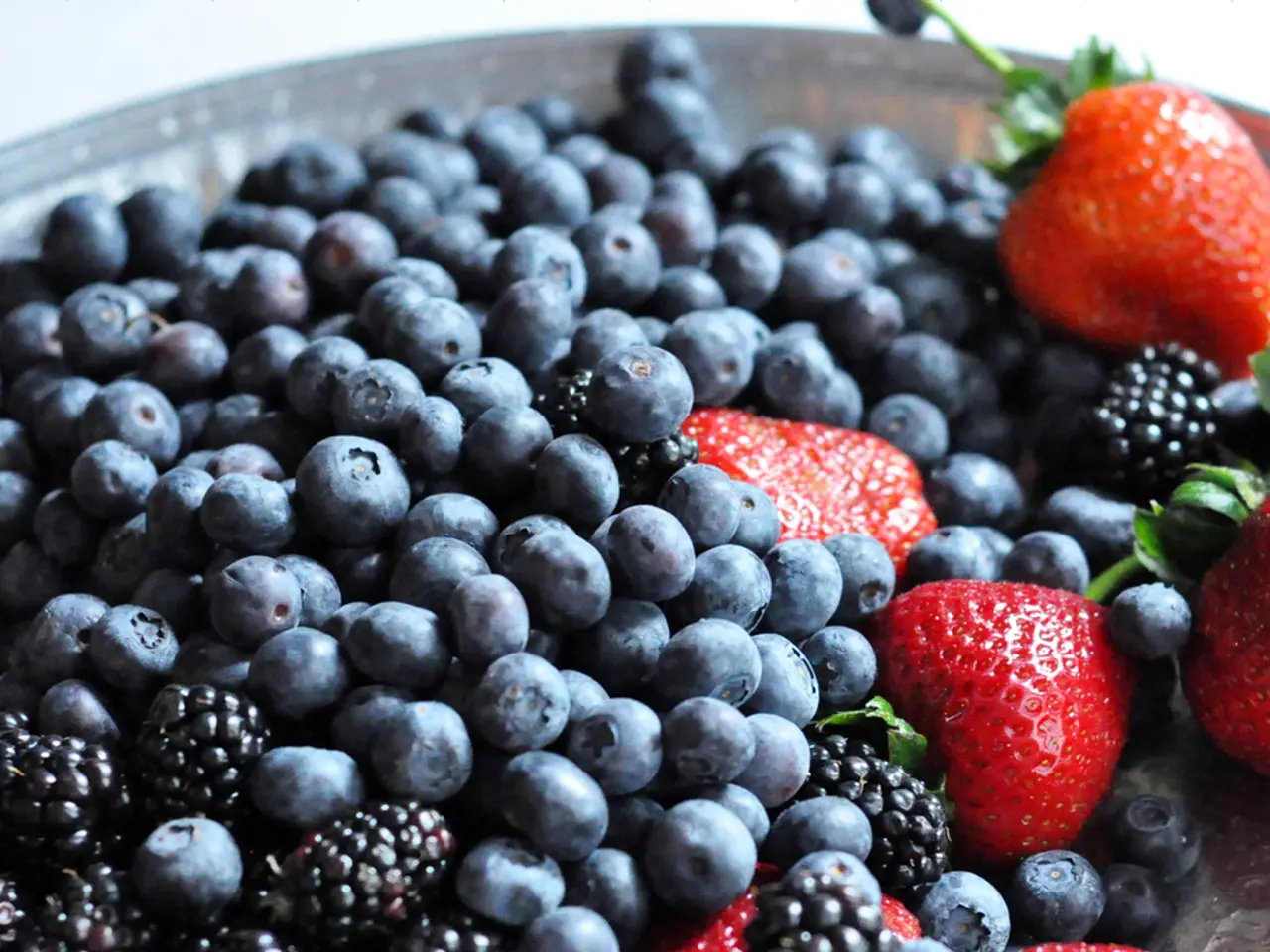Backyard Berry Growing: Top 6 Varieties for Juicy and Tasty Berries Harvest
In the realm of gardening, berries offer a delightful array of flavours and textures, making them a popular choice for both food forest gardens and urban container setups. Each berry type has its unique growth habits, cultivation needs, and suitability for small spaces. Here's a comparison of some common berry types that are perfect for your gardening endeavours.
Strawberries are low-growing perennials that thrive in full sun but can tolerate some shade. They are an excellent choice for small spaces, excelling in modular container systems and grow bags due to their compact size and quick yield. Varieties like June-bearing, Everbearing, and Day-neutral are popular, each offering a different fruiting period to cater to your gardening style.
Currants and Gooseberries are small shrubs that prefer partial shade, making them ideal understory shrubs in food forests or for shaded container spots. These berries, known for their tart, sour fruit suitable for pies and desserts, are well-suited for container culture, often thriving better in semi-shade.
Raspberries, Elderberries, and Strawberries tolerate some shade but prefer partial to full sun. They can be grown in containers if space allows and proper pruning is practiced. Summer-bearing and everbearing (fall-bearing) raspberry varieties are popular, with 'Heritage' and 'Boyne' being suitable for home gardeners. Blackberries share similar growth habits with raspberries but can be more vigorous; thornless varieties like 'Baby Cakes' are popular for ease of harvest.
Blueberries are acid-loving shrubs that require acidic soil and good sun exposure. They are useful as understory or edge shrubs in food forests but can be container-friendly if soil pH and moisture are managed carefully. Rabbiteye, Highbush, and Lowbush types are available, with varieties depending on your zone.
Elderberries are large shrubs that can be container grown but require large pots due to their size. They fit food forests better but can be adapted to large containers if necessary.
Modern hydroponic and modular systems can support some berry types indoors year-round, notably strawberries. However, larger shrubs like elderberries and blackberries require more space.
In summary, strawberries and currants/gooseberries are some of the best choices for small-scale container or urban food forest gardening due to size and shade tolerance. Raspberries and blackberries work well but need larger containers and support. Blueberries require special soil conditions but are excellent for food forests and containers if managed well. Elderberries fit food forests better but can be adapted to large containers.
Sources: 1. Modern Farmer 2. The Spruce Gardens 3. Fast Growing Trees 4. Garden Myths 5. Growing Produce Hydroponically
This article was edited by Kathleen Walters. For more information on edible plants, follow Laura Miller, a specialist in vegetables, herbs, and edible plants, on her gardening journey.
Further Reading: - 'Cherokee' - an erect-growing blackberry bush producing large, firm fruit. - 'Pixwell' Gooseberry - a thornless variety with tangy berries great for jams and jellies. - 'Obsidian' - a trailing blackberry developed for early ripening and large fruit. - 'Red Lake' Currant - a cold-hardy variety boasting large clusters of fruit. - 'Pink Champagne' Currant - a cross between red and white currants resulting in a delicate pink berry. - 'Dorman Red' - an ever-bearing, trailing raspberry bush bred for heat and southern climates. - 'Baby Cakes' - a dwarf, thornless blackberry suitable for containers.
Raspberries are available in colours like red, yellow, and black, offering a rainbow of choices for your garden.
- Although blueberries prefer full sun and acidic soil, they can be grown in containers if soil pH and moisture are managed properly, making them suitable for various gardening lifestyles and food-and-drink preferences.
- For those with limited space, strawberries are an excellent choice for small-scale container gardening or urban food forests due to their low-growing perennial nature, tolerance of some shade, and quick yield, while raspberries, despite requiring larger containers and proper pruning, offer a variety of colors like red, yellow, and black for an appealing food-and-drink selection.
- Currants and gooseberries, being small shrubs that prefer partial shade, are suitable for understory shrubs in food forests or for shaded container spots, offering their tart, sour fruit perfect for pies, desserts, and preserves, thereby enriching food-and-drink experiences and adding a touch of gardening to your lifestyle.




